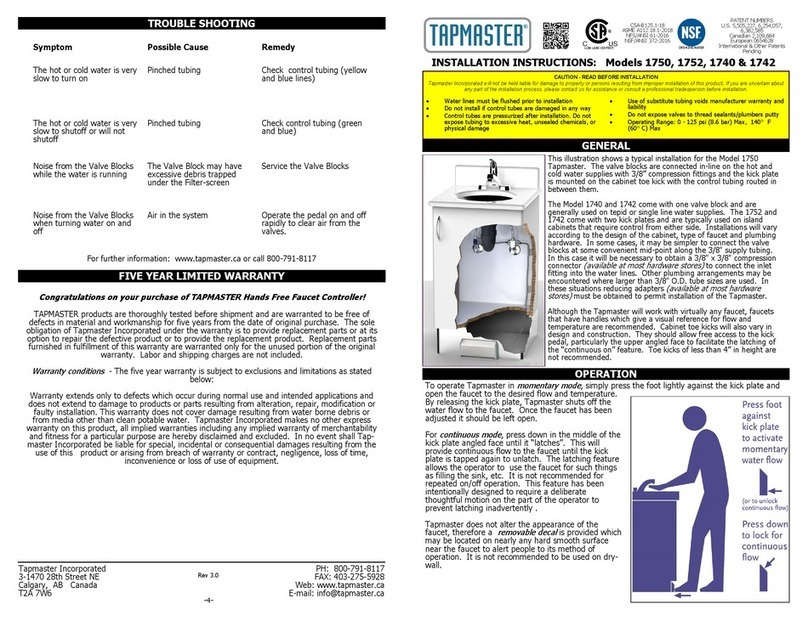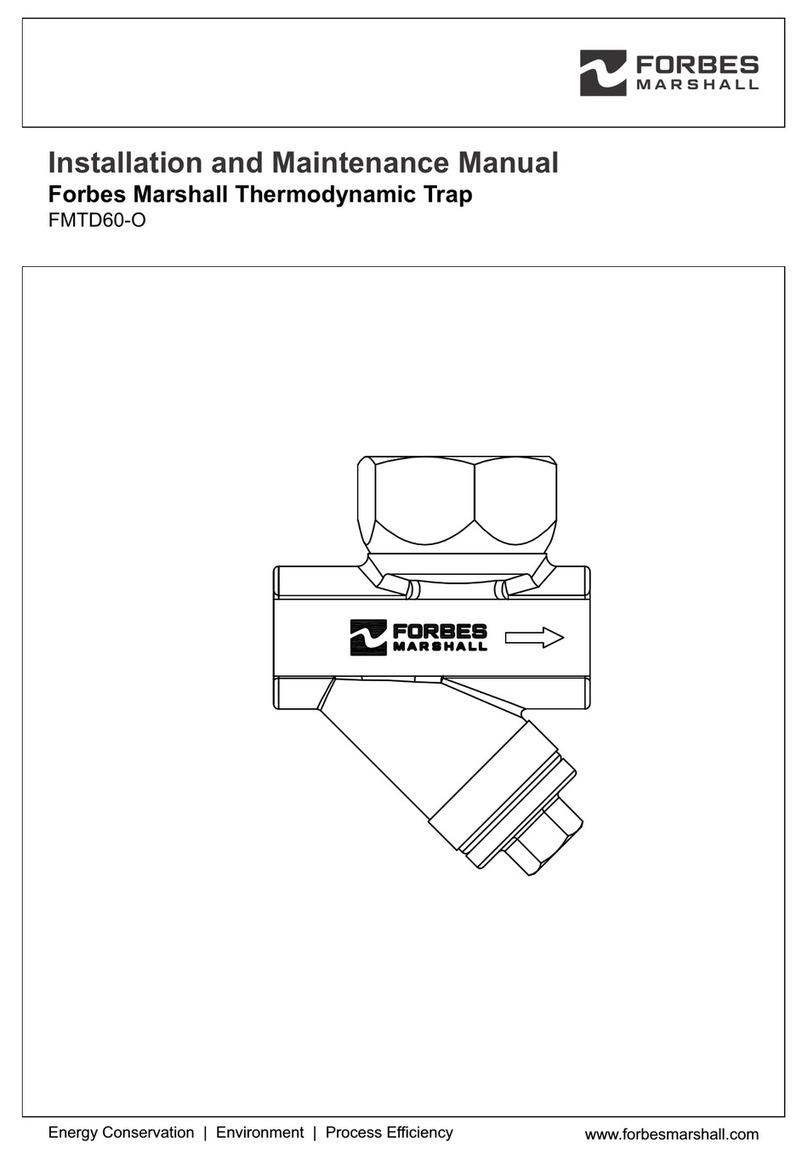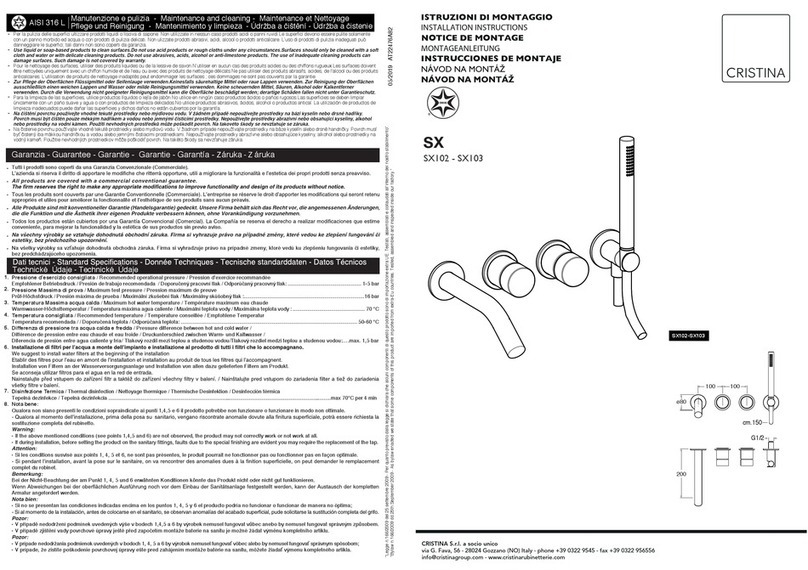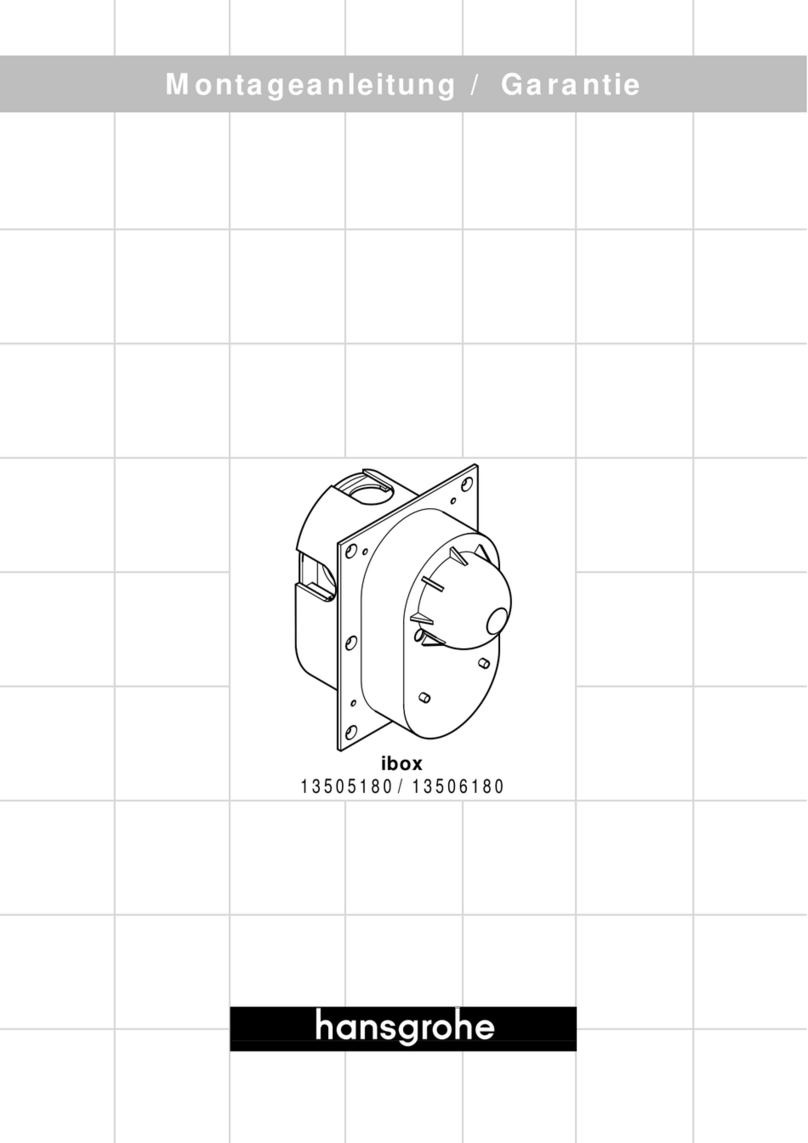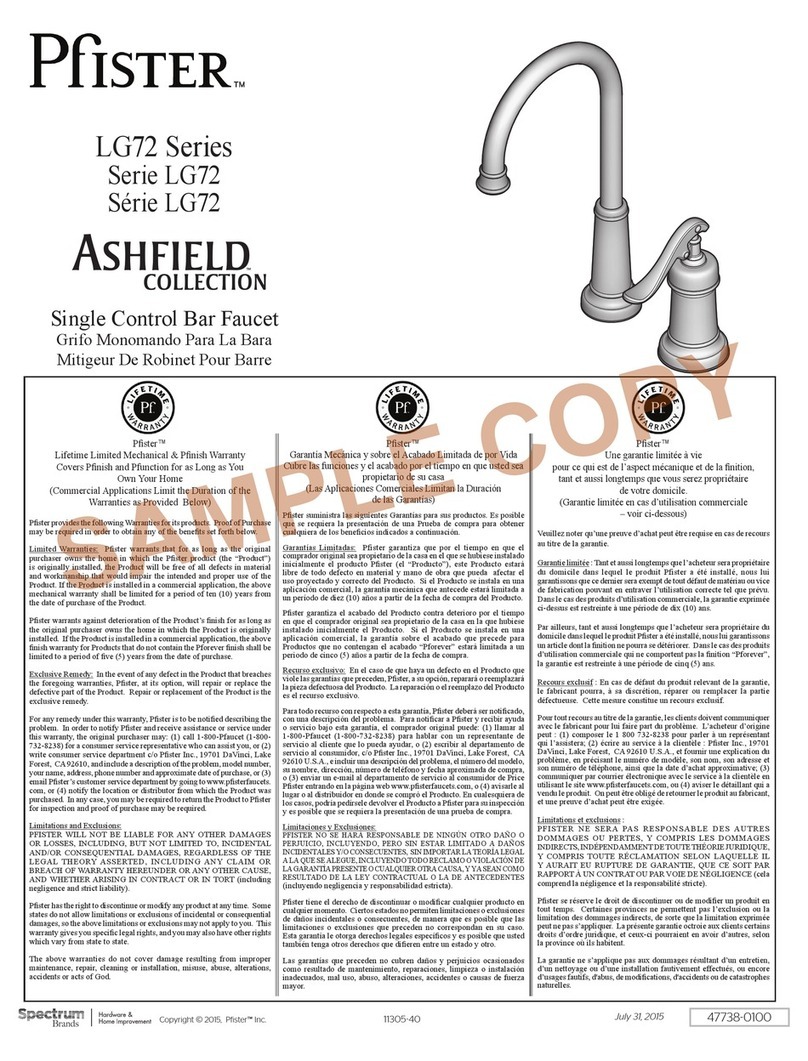Tapmaster 1720 User manual

GENERAL
This illustration shows a typical installation for the Model 1720 Tapmaster. The valve blocks are
connected in-line on the hot and cold water
supplies with 3/8” O.D. compression fittings. The
pilot/actuator valve is mounted about knee
height on the inside wall of the cabinet opposite
the door hinge. The control tubing is routed in
between the valves. Water flow to the faucet is
activated by pressing with the knee or leg against
the cabinet door.
Installation for the 1722 and 1710 models is
essentially identical. The Model 1722 comes with
two pilot/actuator valves and is generally used on
island cabinets required control from either side.
The Model 1710 comes with one valve block
attached to a pilot/actuator valve and is typically
used on mixed or single line water supplies.
Installations will vary according to the design of
the cabinet, type of faucet and plumbing
hardware. In some cases it may be simpler to
connect the valve blocks at some convenient mid
-point along the 3/8" supply tubing. In this case it will be necessary to obtain a 3/8" x 3/8"
compression connector
(available at most hardware stores)
to connect the inlet fitting into the
water lines. Other plumbing arrangements may be encountered where larger than 3/8" O.D. tube
sizes are used. In these situations reducing adapters
(available at most hardware stores)
must be
obtained to permit installation of the Tapmaster.
Although the Tapmaster will work with virtually any faucet, faucets with handles that give a visual
reference for flow and temperature are recommended. Cabinet doors will also vary in design and
construction. Doors with spring loaded hinges are recommended. However, mechanical and
magnetic latches will work equally well as long as there is some play in the mechanism to
accommodate the 1/32” stroke of the pilot/actuator valve.
OPERATION
To operate the Tapmaster simply press against the cabinet door
with your knee or leg and set the faucet open to the desired flow
and temperature. By releasing the door, the Tapmaster shuts off
the water flow to the faucet. Once the faucet has been adjusted
it should be left open.
The Tapmaster does not alter the appearance of the faucet,
therefore a
removable decal
is provided which may be located on
any hard smooth surface near the faucet to alert people to its
method of operation. Alternately, simply attaching a piece of tape,
string or an elastic band to the faucet handle will remind the end-
user the faucet is Tapmaster equipped.
INSTALLATION INSTRUCTIONS: Models 1720, 1722 & 1710
TROUBLE SHOOTING
FIVE YEAR LIMITED WARRANTY
Congratulations on your purchase of TAPMASTER Hands Free Faucet Controller!
TAPMASTER products are thoroughly tested before shipment and are warranted to be free of
defects in material and workmanship for five years from the date of original purchase. The sole
obligation of Tapmaster Incorporated under the warranty is to provide replacement parts or at its
option to repair the defective product or to provide the replacement product. Replacement parts
furnished in fulfillment of this warranty are warranted only for the unused portion of the original
warranty. Labor and shipping charges are not included.
Warranty conditions
- The five year warranty is subject to exclusions and limitations as stated
below:
Warranty extends only to defects which occur during normal use and intended applications and
does not extend to damage to products or parts resulting from alteration, repair, modification or
faulty installation. This warranty does not cover damage resulting from water borne debris or
from media other than clean potable water. Tapmaster Incorporated makes no other express
warranty on this product, all implied warranties including any implied warranty of merchantability
and fitness for a particular purpose are hereby disclaimed and excluded. In no event shall Tap-
master Incorporated be liable for special, incidental or consequential damages resulting from the
use of this product or arising from breach of warranty or contract, negligence, loss of time,
inconvenience or loss of use of equipment.
Rev 3.0
-4-
PH: 800-791-8117
FAX: 403-275-5928
Web: www.tapmaster.ca
E-mail: info@tapmaster.ca
Tapmaster Incorporated
#3, 1470 28 Street NE
Calgary, Alberta
T2A 7W6
Symptom Possible Cause Remedy
The hot or cold water is very
slow to turn on
Pinched tubing Check control tubing (yellow
and blue lines)
The hot or cold water is very
slow to shutoff or will not
shutoff
Pinched tubing Check control tubing (green
and blue)
Noise from the Valve Blocks
while the water is running
The Valve Block may have
excessive debris trapped
under the Filter-screen
Service the Valve Blocks
Noise from the Valve Blocks
when turning water on and
off
Air in the system Operate the pedal on and off
rapidly to clear air from the
valves.
For further information: www.tapmaster.ca or call 800-791-8117
PATENT NUMBERS
U.S. 5,505,227, 6,254,057,
6,382,585
Canadian 2,109,684
European 0654628
International & Other Patents
Pending
CSA-B125.1-18
ASME A112.18.1-2018
NFS/ANSI 61-2016
NSF/ANSI 372-2016
LOW LEAD CONTENT DRINKING WATER
CAUTION - READ BEFORE INSTALLATION
Tapmaster Incorporated will not be held liable for damage to property or persons resulting from improper installation of this product. If you are uncertain about
any part of the installation process, please contact us for assistance or consult a professional tradesperson before installation.
• Water lines must be flushed prior to installation
• Do not install if control tubes are damaged in any way
• Control tubes are pressurized after installation. Do not
expose tubing to excessive heat, unsealed chemicals, or
physical damage
• Use of substitute tubing voids manufacturer warranty and
liability
• Do not expose valves to thread sealants/plumbers putty
• Operating Range: 0 - 125 psi (8.6 bar) Max, 140° F
(60° C) Max

-2-
These cutaway views of various cabinet styles provide
illustrations for some of the many possibilities of positioning
the pilot/actuator valve using the door as an activator. The
activator does not necessarily have to be a door. The
possibilities are only limited by the hardware available and the
imagination of the installer. Any surface or panel where a
slight movement
(approximately 1/32”)
can be created which
can be pressed by the knee, leg or hip has the potential to be
a hands free activator.
As an example, in the public washroom drop-in counter sinks
below, the Tapmaster actuator valve rests against a hinged
panel with a towel or grab bar mounted on it. Simply a light
push of the bar with the upper knee or lower thigh area acti-
vates the water flow releasing the bar stops it.
INSTALLING THE PILOT/ACTUATOR VALVE
First determine a height location where the
pilot/actuator valve is to be mounted on the
inside of the cabinet opposite the door
hinge, preferably about knee height or
higher. The objective is to mount the pilot/
actuator valve so that the inside face of the
cabinet rests against the button of the pilot/
actuator valve. This will set the door ajar
very slightly, about 1/32".
STEP #1 - Fasten the mounting bracket
with the wood screws and washers
provided, ensuring that there is approxi-
mately 1/4" gap between the inside of the
door and the face of the mounting bracket
(see illustration).
STEP #2 - Mount the pilot/actuator valve
onto the mounting bracket ensuring the inside of the door rests against the button of the pilot/
actuator valve. To adjust the position of the pilot/actuator valve relative to the door, use the
screw slots on the mounting bracket as a coarse adjustment and the 15/32-32 hex nuts on the
pilot/actuator valve body as a fine adjustment. The pilot/actuator should be positioned to assure
full travel of the button of the pilot/actuator valve while minimizing how far the door is set ajar or
offset
(Hint: Set the first nut on the pilot/actuator valve all the way down on the stem and adjust
second nut until the valve is properly adjusted then tighten the first nut to secure the valve).
STEP #3 - Route the control tubing with the self-adhesive plastic clips provided. The control
tubing is pressurized, be sure it is properly secured to prevent accidental damage by cabinet
doors, hinges or objects being transferred in and out of the cabinet.
INSTALLING THE PILOT/ACTUATOR VALVE IN VARIOUS CABINETS
1/4” Gap
Use bracket mounting screws
for coarse adjustment.
Use valve
mounting
nuts for fine
adjustment.
Cabinet
-3-
INSTALLING THE VALVE BLOCKS
The Tapmaster valve blocks are connected in-line between the hot and cold shut off valves and
the faucet tubes as shown in Figure 2.
(Note: The valve blocks are identical in function and
may be used on either hot or cold water lines. Position them according to how the control tubing
will be routed). (Small leaks may take several minutes to show up).
STEP #1 - Hook up the control tubing from the pilot/actuator to the valve block with the plastic
sleeves provided as per Figure 1. (Note: To facilitate the
installation of the tubing and sleeves, dip the ends of the
tubing into hot soapy water and using a pair of needle nose
pliers push the tubing on to the barb fittings. An adjustable
wrench opened to the diameter of the tubing will assist in
pushing on the sleeves.
Take care not to damage the barb
fittings or crush the tubes.
If a tube must be removed from a
barb fitting, split the tube along its length with a sharp knife
(Do not pull as this may damage the barb).
STEP #2 - Turn off the
water supplies and place a
bucket underneath the shut
off valves to catch water that
may run out of the plumbing.
(Hint: Closing the faucet handles will
minimize leakage)
. Loosen the compression nuts on the connect-
ing 3/8” O.D. supply tubes, at the shut off valves. If the faucet
utilizes copper tube risers, bend and reposition the tubes in such a
manner as to create a 1-1/2" gap
(Do not kink).
To simplify the
installation, replace the copper risers with flex risers
(available at
most hardware stores)
. If this cannot be readily accomplished the
tubes will have to be shortened approximately 1-1/2”. Cut the
tubes with a tube cutter. If a tube cutter is not available a
hacksaw may be used, however be sure to de-bur and square the
ends. Extra compression nuts and sleeves are provided should
the tubes need to be cut.
STEP #3 - Prior to installing the valve blocks, open the shut-off
valves momentarily to flush out any debris in the water lines.
Large pieces of water borne debris will be trapped by the filter/
screen in the valve blocks and may reduce water flow or cause
noisy operation. As shown in Figure 2 connect the valve block(s)
with the integrated nut (input) to the shutoff fitting and the faucet
riser to the compression thread (output). Finger tighten only until
both valve blocks are in position. Be sure the plastic control tub-
ing and fittings are not damaged in any manner.
STEP #4 - Proceed to tighten the compression nuts using a 5/8”
wrench on the nut and a 7/8” wrench on the valve block body . Do
not over tighten 3/8” compression fittings with O-ring seals such
as the valve block input fitting. Hand tighten plus 1/2 turn with
wrench.
STEP #5 - Verify that all connections are tight. Turn on the
water supply(s) and inspect all connections for leaks. Set the
faucet, both hot and cold, completely open and push the cabinet
door to activate the water flow. Operate the Tapmaster on and
off rapidly to clear air from the valves. The valves may experience
some noise during on or off operation until the air is cleared. Allow
significant time to pass and then re-inspect all connections for
leaks
(Small leaks may take several minutes to show up).
Figure 1
Figure 2
FAUCET
RISER
OUTPUT
INPUT
SHUTOFF

This manual suits for next models
2
Other Tapmaster Plumbing Product manuals
Popular Plumbing Product manuals by other brands
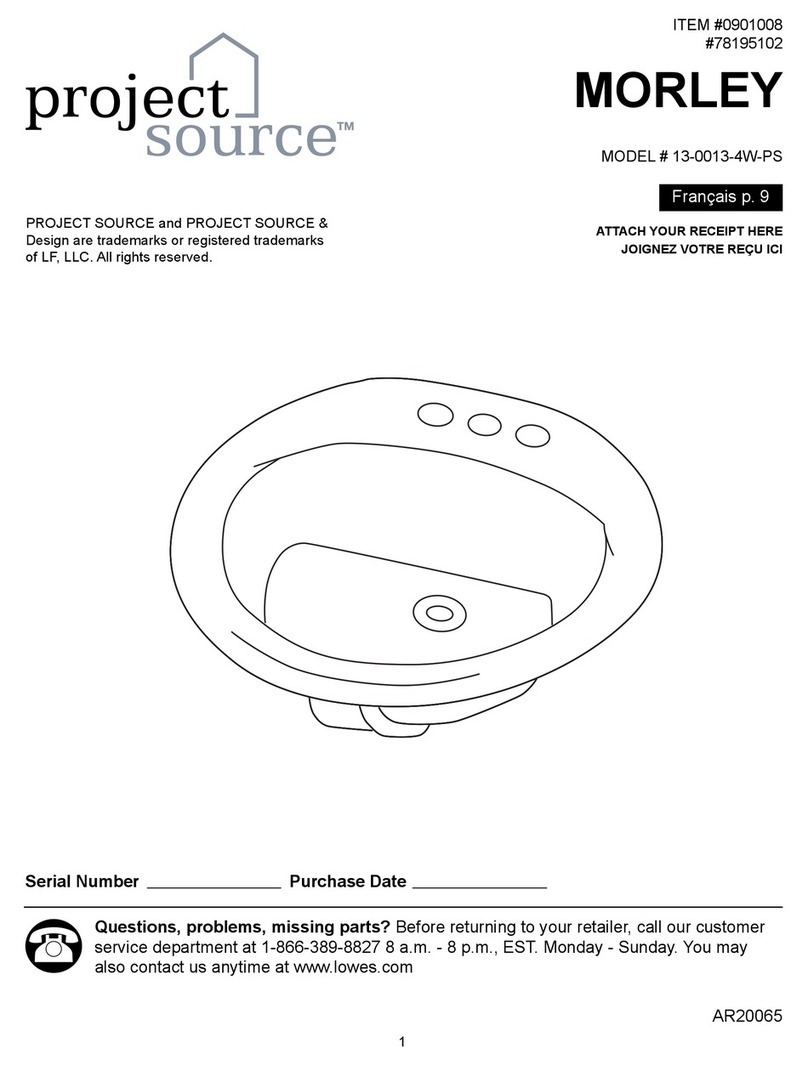
Project Source
Project Source MORLEY manual
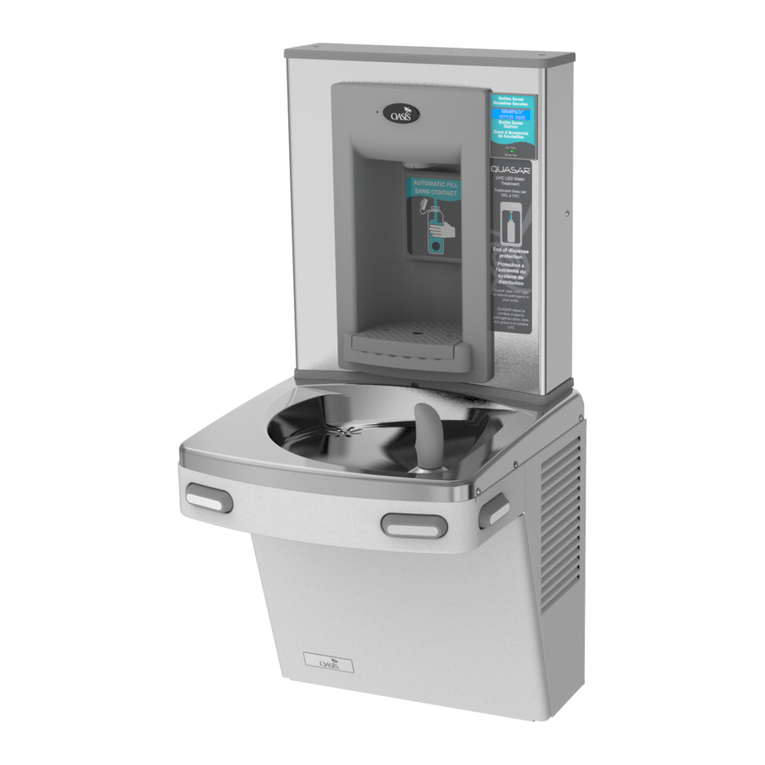
Oasis
Oasis VERSACOOLER II manual
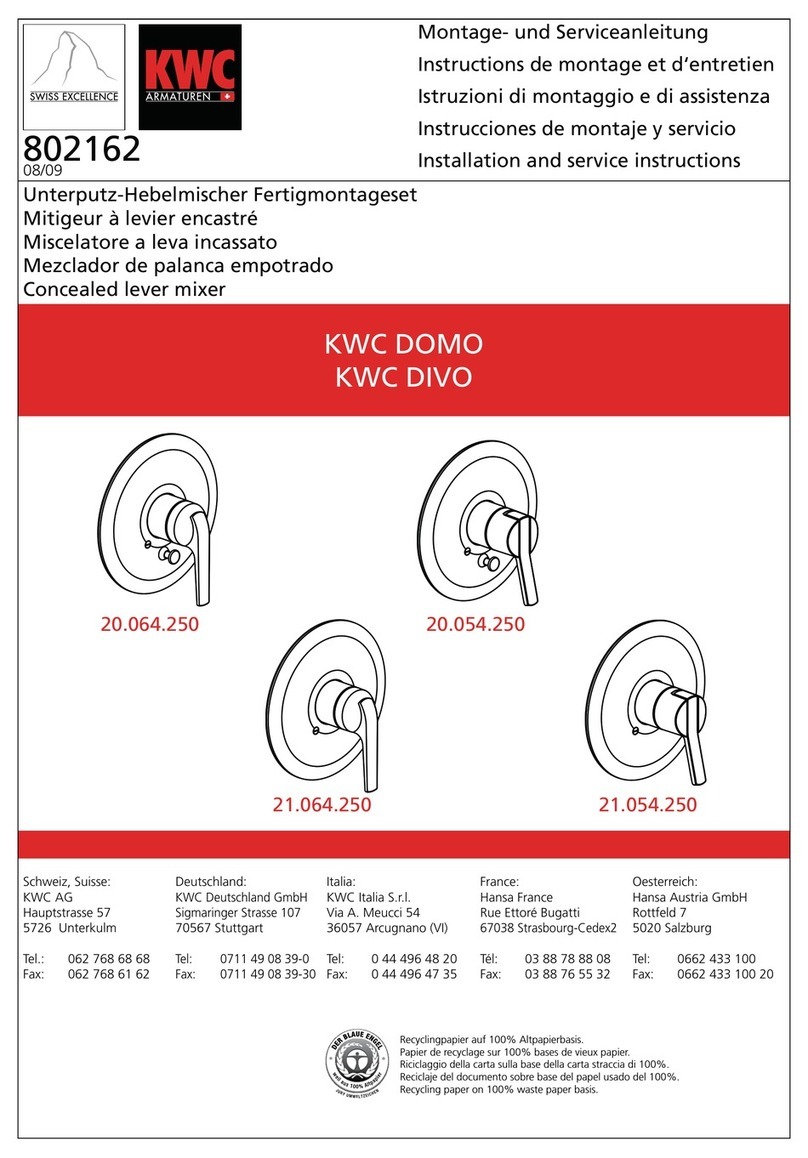
KWC
KWC DIVO 20.064.250 Installation and service instructions
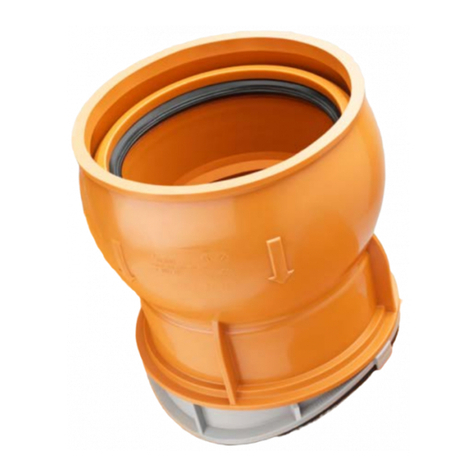
Rehau
Rehau DN 160 installation instructions
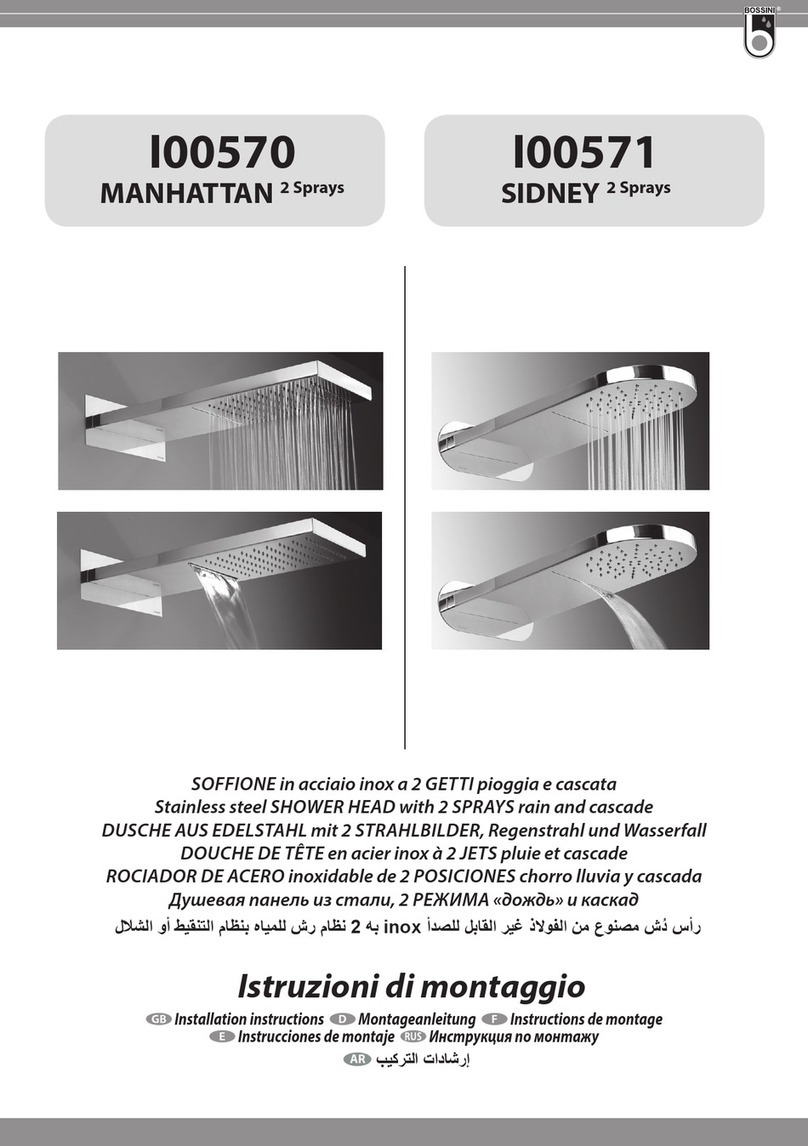
Sanipex
Sanipex Bossini MANHATTAN I00570 installation instructions
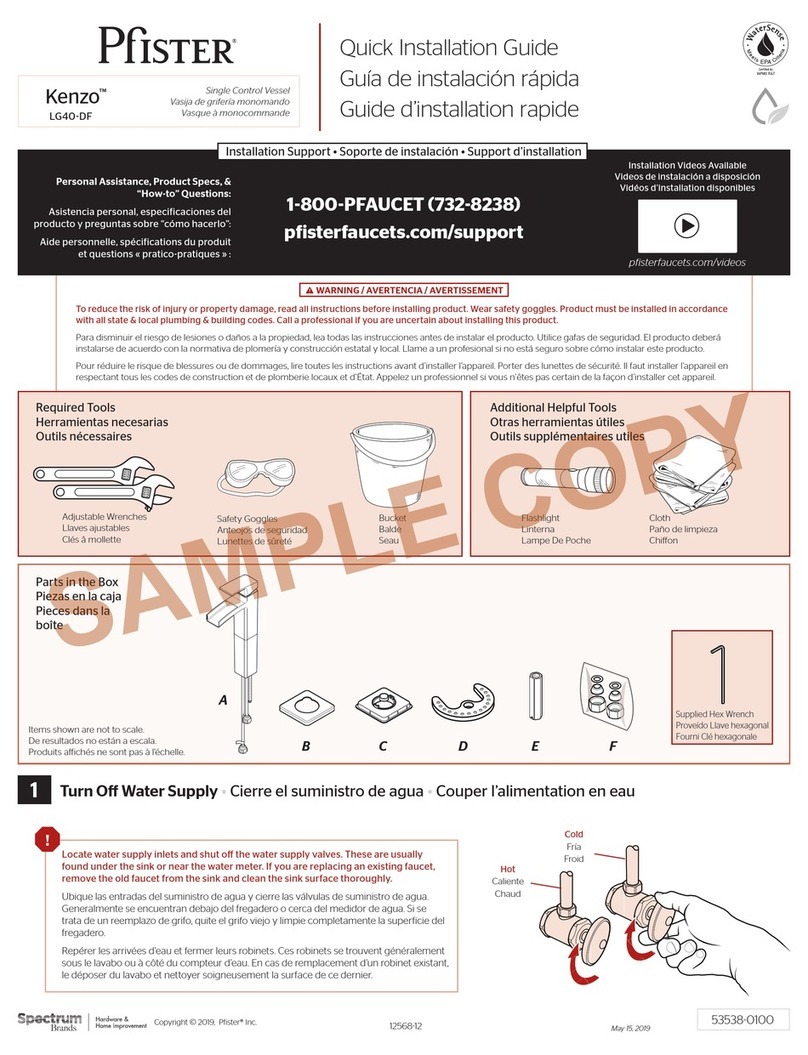
Spectrum Brands
Spectrum Brands Pfister Kenzo LG40-DF Quick installation guide
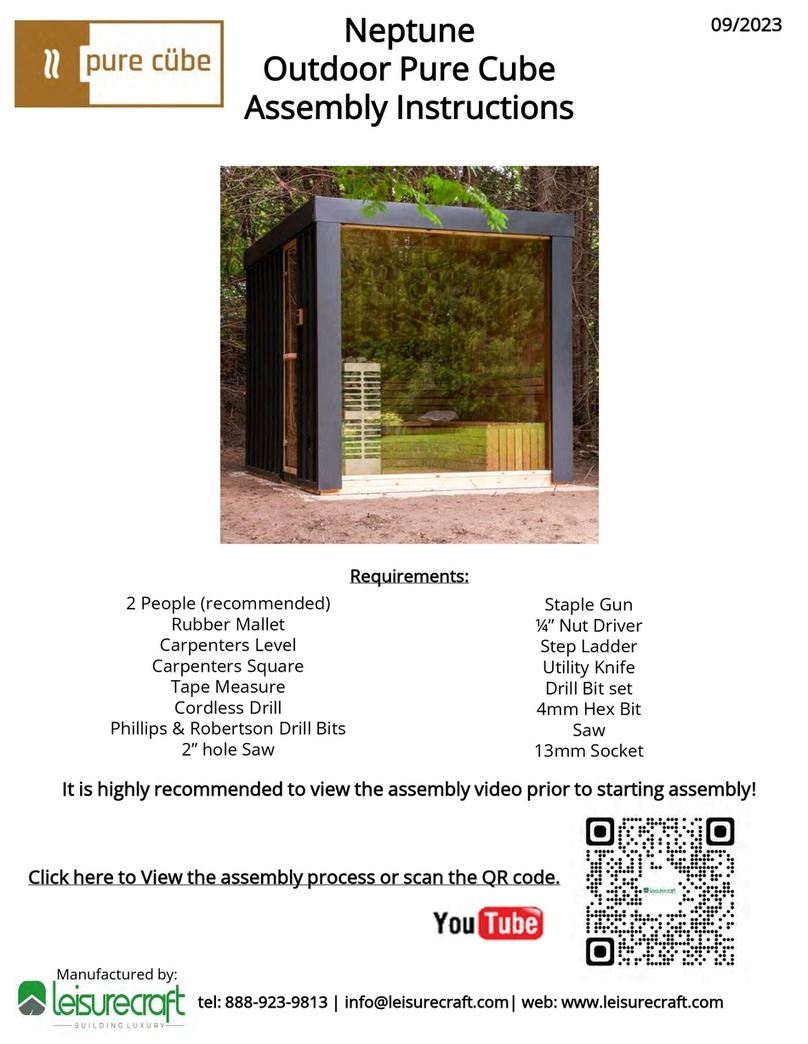
leisurecraft
leisurecraft pure cube Neptune Assembly instructions
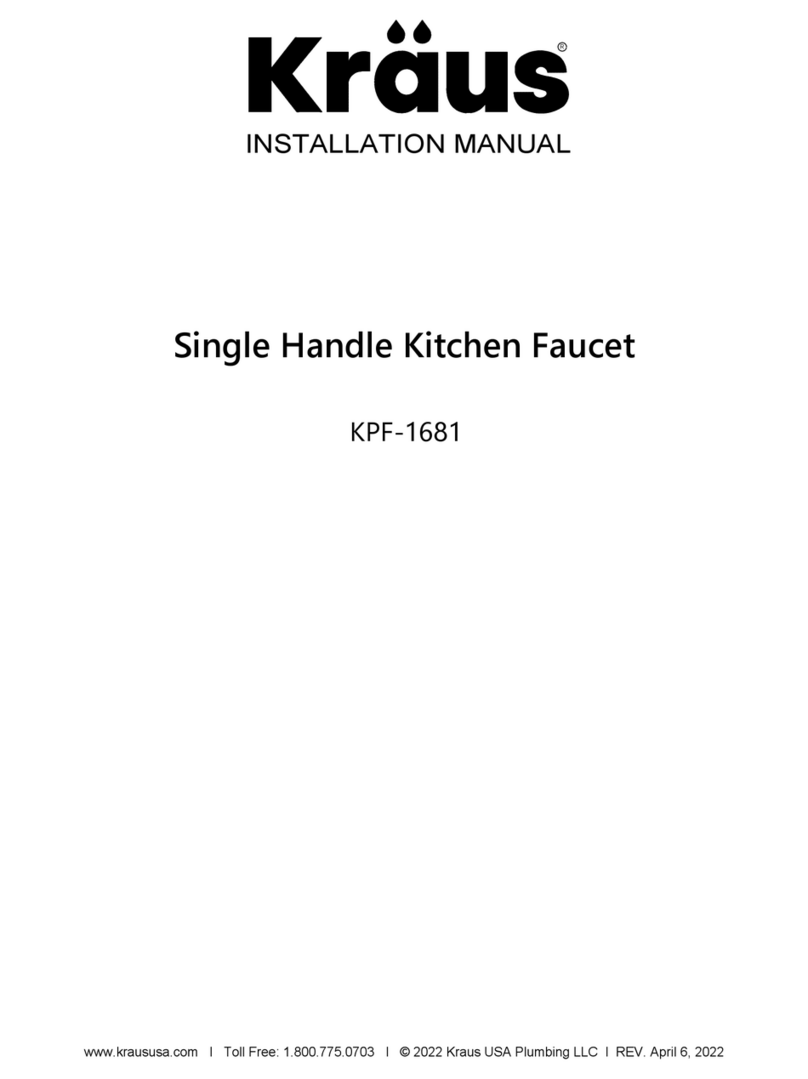
Kraus
Kraus KPF-1681 manual
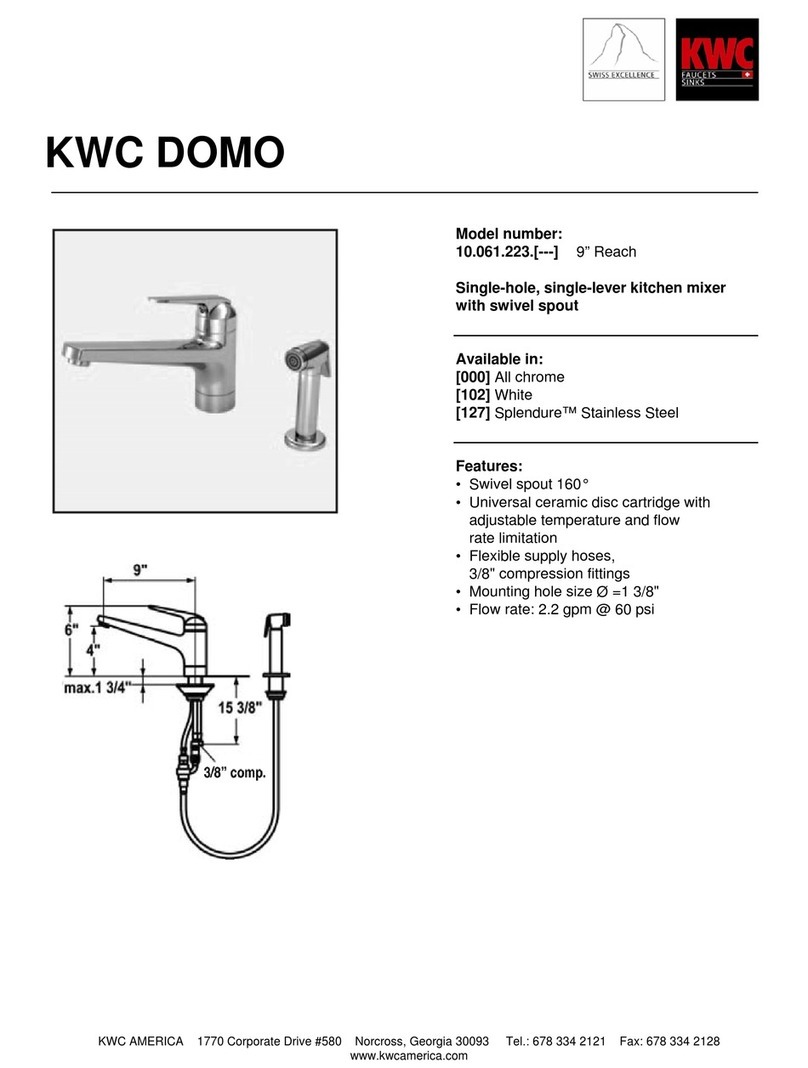
KWC
KWC DOMO 10.061.223 Specifications
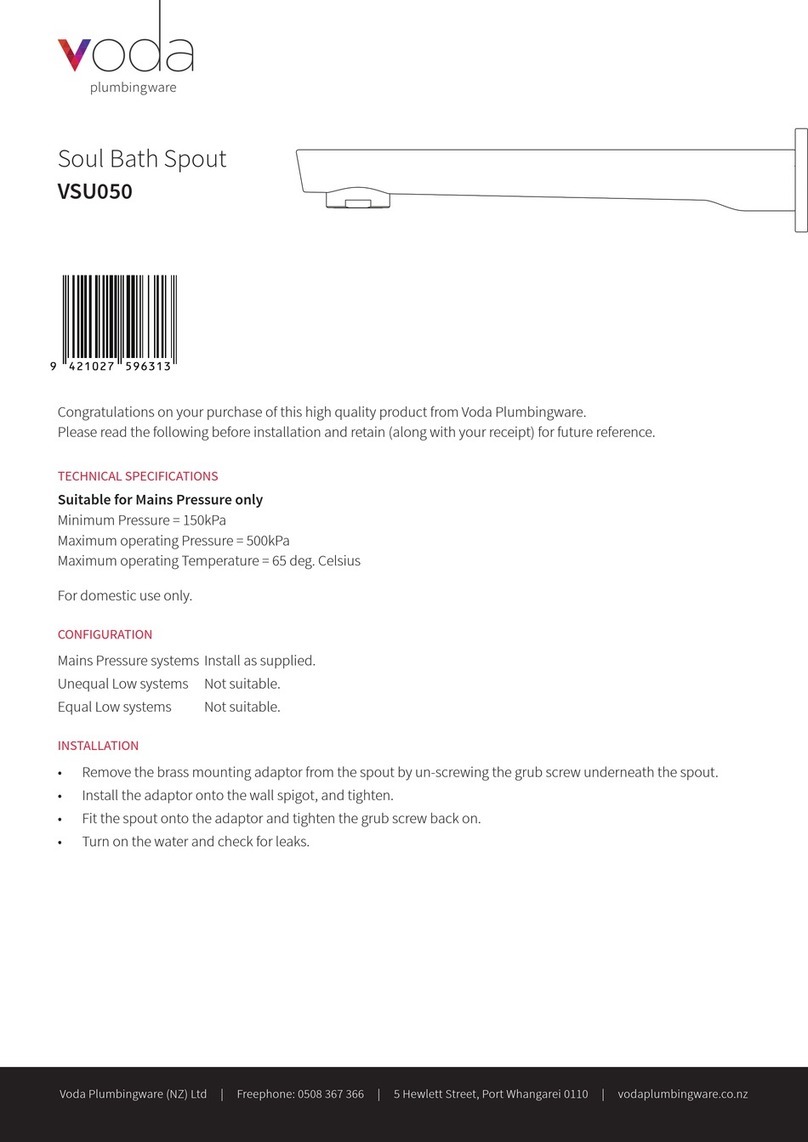
Voda Plumbingware
Voda Plumbingware VSU050 quick start guide
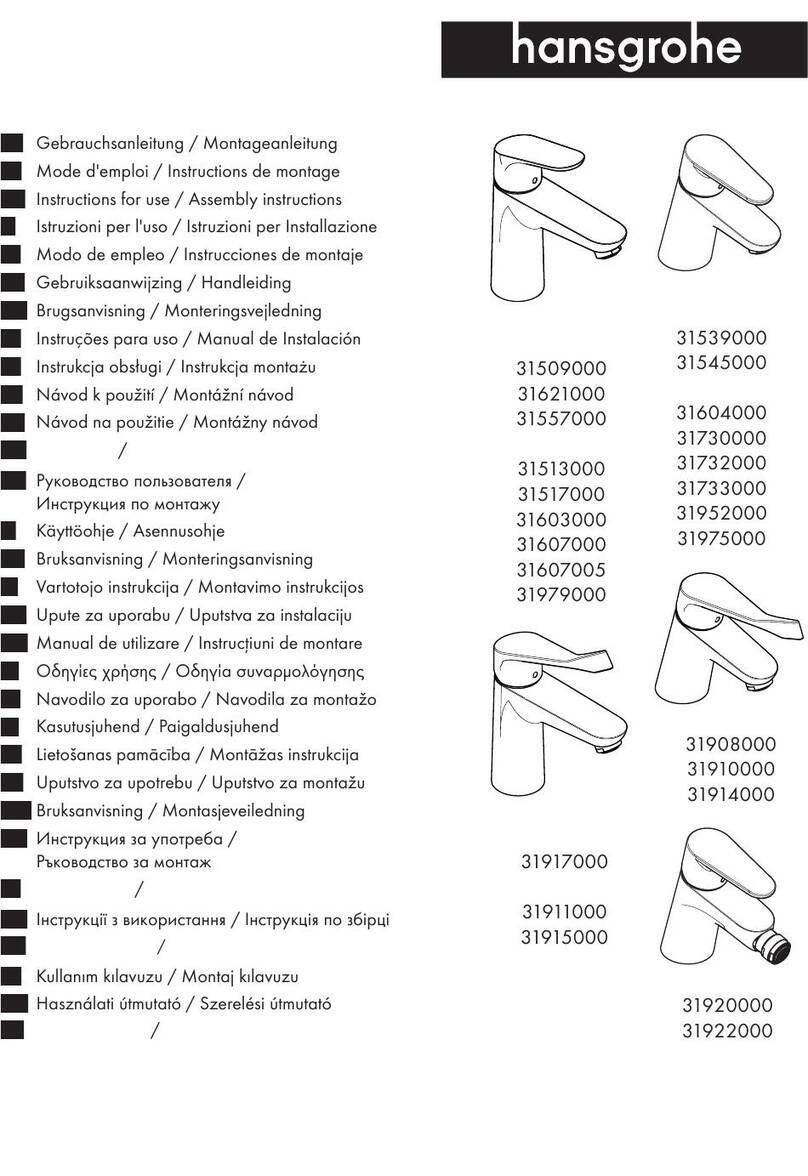
Hans Grohe
Hans Grohe Focus 100 CoolStart 31509000 Instructions for use/assembly instructions
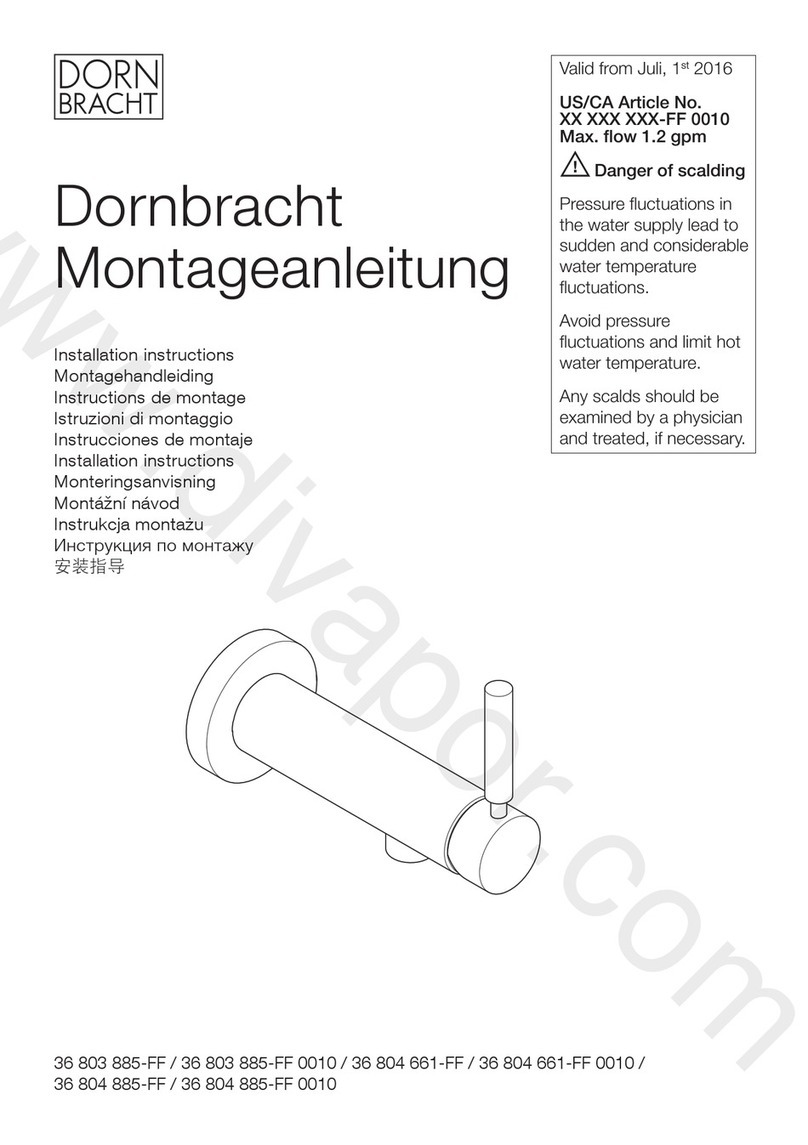
Dornbracht
Dornbracht 36 803 885-FF installation instructions

